How to Relate. Out on the Street Arts Festival of Spoffin

Spoffin in the medieval city of Amersfoort, in the Netherlands, offers a weekend of international performances to discover in the city centre. The program reveals its multidisciplinarity by mixing contemporary circus, dance, and street theatre in the outdoor arts. We spent three days there capturing the vibes and wrote about the 2023 edition.
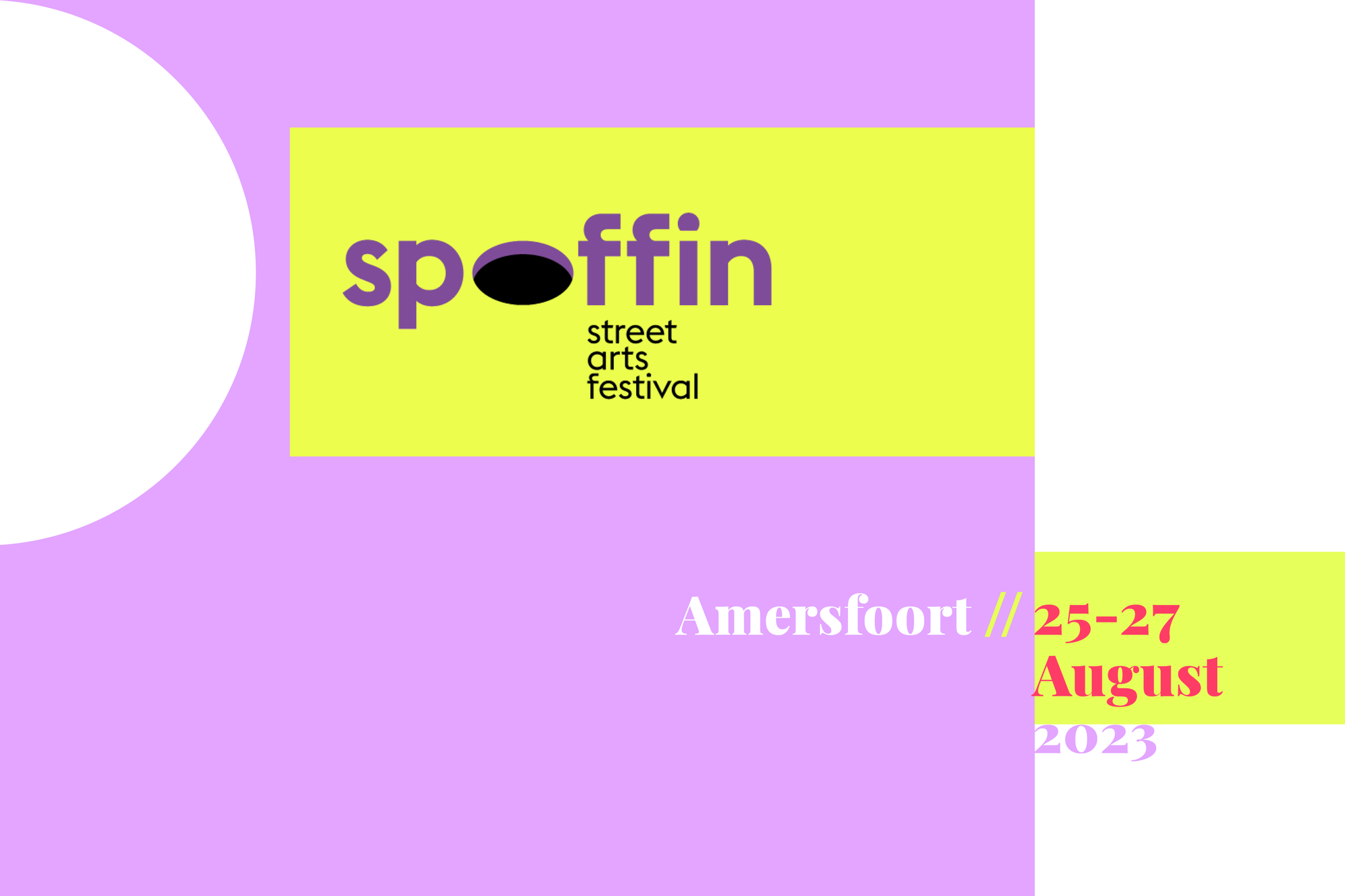
A kiss on the forehead. A shoulder to lean on. A helping hand. A big hug. Also, a ‘no’ gesture with the index finger. A pull on an arm. A push away. A disappointed look. Some physical gestures become symbols that describe a specific way to relate to each other accurately enough that no words are necessary, or maybe just a few. We build familiar relationships with a parent, a relative, or a sibling. Friendly relationships grow on companionship and trust in society affects us. How we relate affects ourselves, thoughts, wishes, memories, and the subconscious. Lastly, we can even connect with strangers in a random moment. In a street, a square in public, or even in the open spaces of a small medieval city in the Netherlands, Amersfoort.
That is the setting where the 13th edition of Spoffin took place between the 25-27 of August. During the weekend, various locations around the city centre hosted circus, dance and outdoor arts in a multidisciplinary programme. Speaking about outdoor festivals often means that the no-ticket shows could happen anywhere, even in front of someone’s door or porch. However, a no-ticket does not mean the shows are for free. Instead, the audience could donate any amount after the performance and vote for their favourite show online.
This year, the Spoffin programme also focused on Italian outdoor arts thanks to the international project InterSpazi in collaboration with the Italian FNAS, contributing to the realisation of a focus on Italian artists within the programme of the 2023 edition. InterSpazi is a project financed by the Minister of Culture of Italy, led by Mirabilia Festival, in collaboration with FNAS, Mamatita Festival, Twain Dance Production Centre, together with the foreign partners FIT Carrer Festival (ES), Passage Festival (DK), Deventer Op Stelten (NL) and Spoffin.
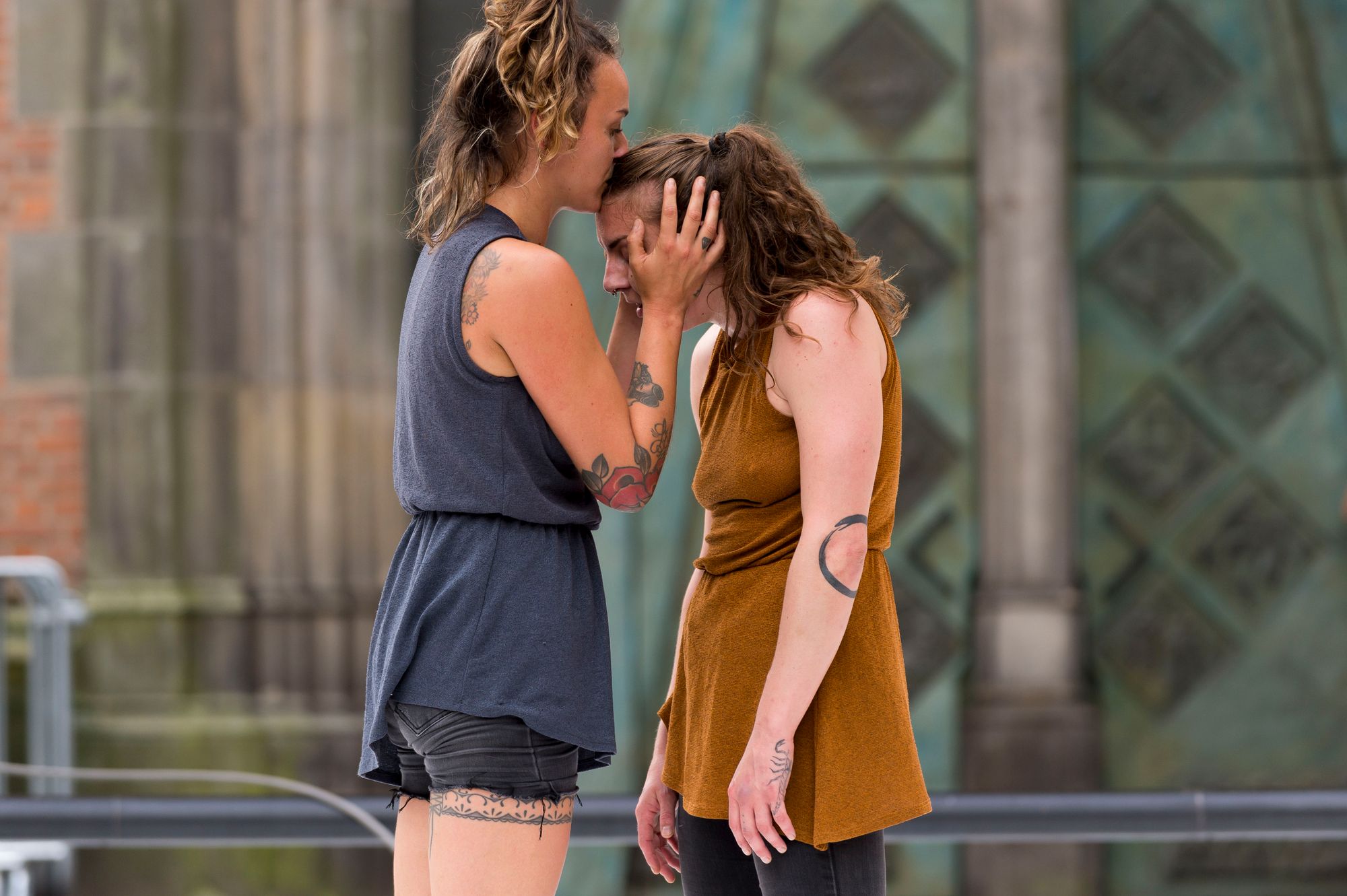
We started the first day of shows with one of the Italian companies invited, Circo in Rotta, with Tienimi che Ti tengo. The show is about a long-term friendship between two women in all its lights. Complimentary, tender, assisting, or comforting, sometimes friendship can also be opposing, blocking, or challenging. Using different elements and circus techniques, the two performers negotiate what it means to weigh the world on their shoulders as two women who didn’t ask for this responsibility but got it nonetheless. As they try to speak their minds, they are interrupted all the time, and as one of them admits, it is as if their words mean less or are lighter in comparison to other people. Hopefully, sisterhood means always being stronger together, and a kiss on the forehead is what is needed to keep going no matter what.
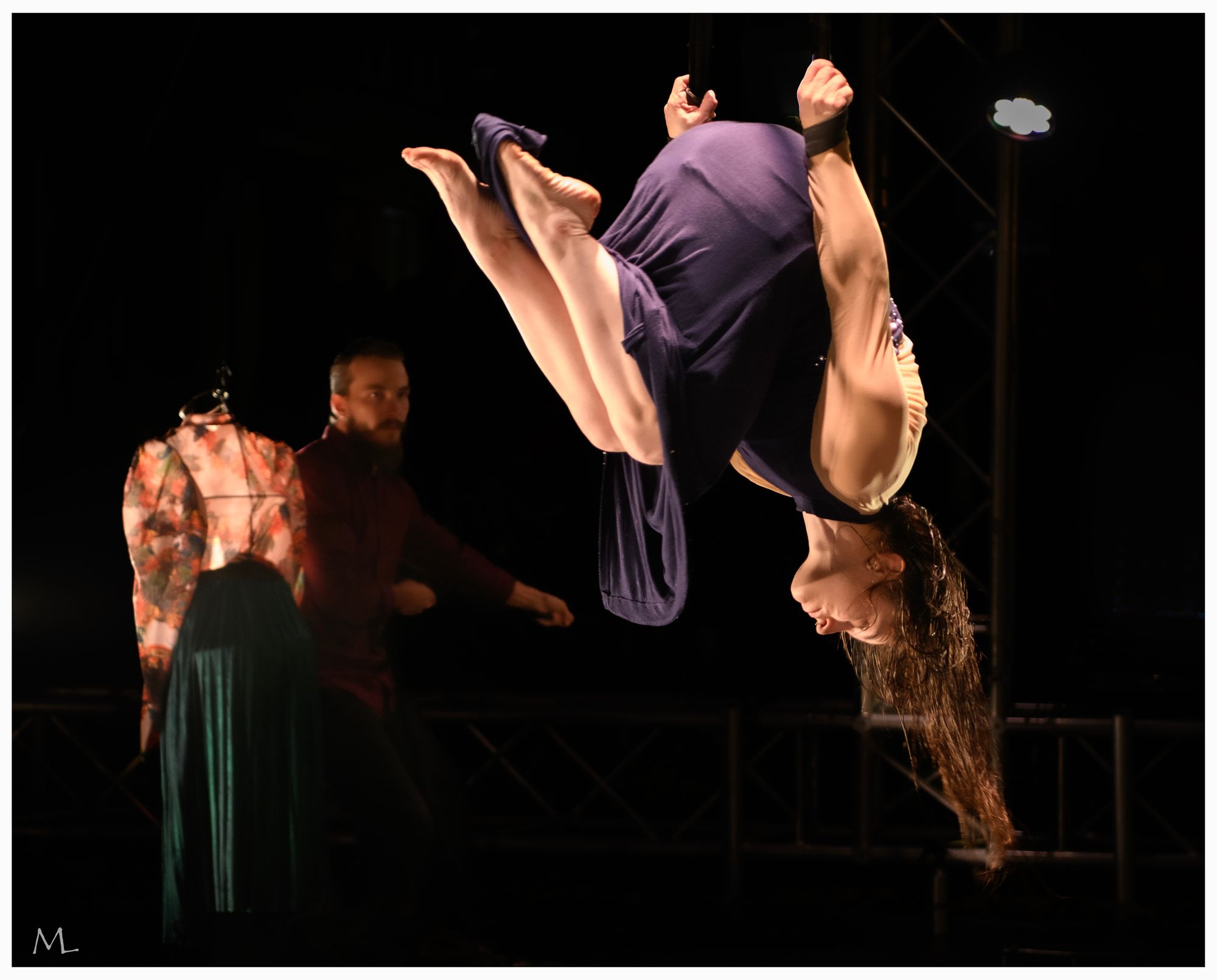
From a tender performance to an intense one, we continued the exploration of the female perspective with Frammenti #1 by the Italian Cecilia Rosso. Here, the author has adapted the piece from an indoor to an outdoor dimension. Between mirrors and mannequins, the performance explores what it means for a woman to be going in and out of her skin, trying to fit other people’s standards and expectations. Through hair hanging and aerial straps, she tries to come to terms with and understand how multiple personalities can co-exist in one person. She claims to be strong, showing physical strength and charisma. In the end, she doesn’t need the approval of others, although sometimes she accepts to interact with a caring figure, portrayed by her assistant in this piece, Jakob Lohmann.
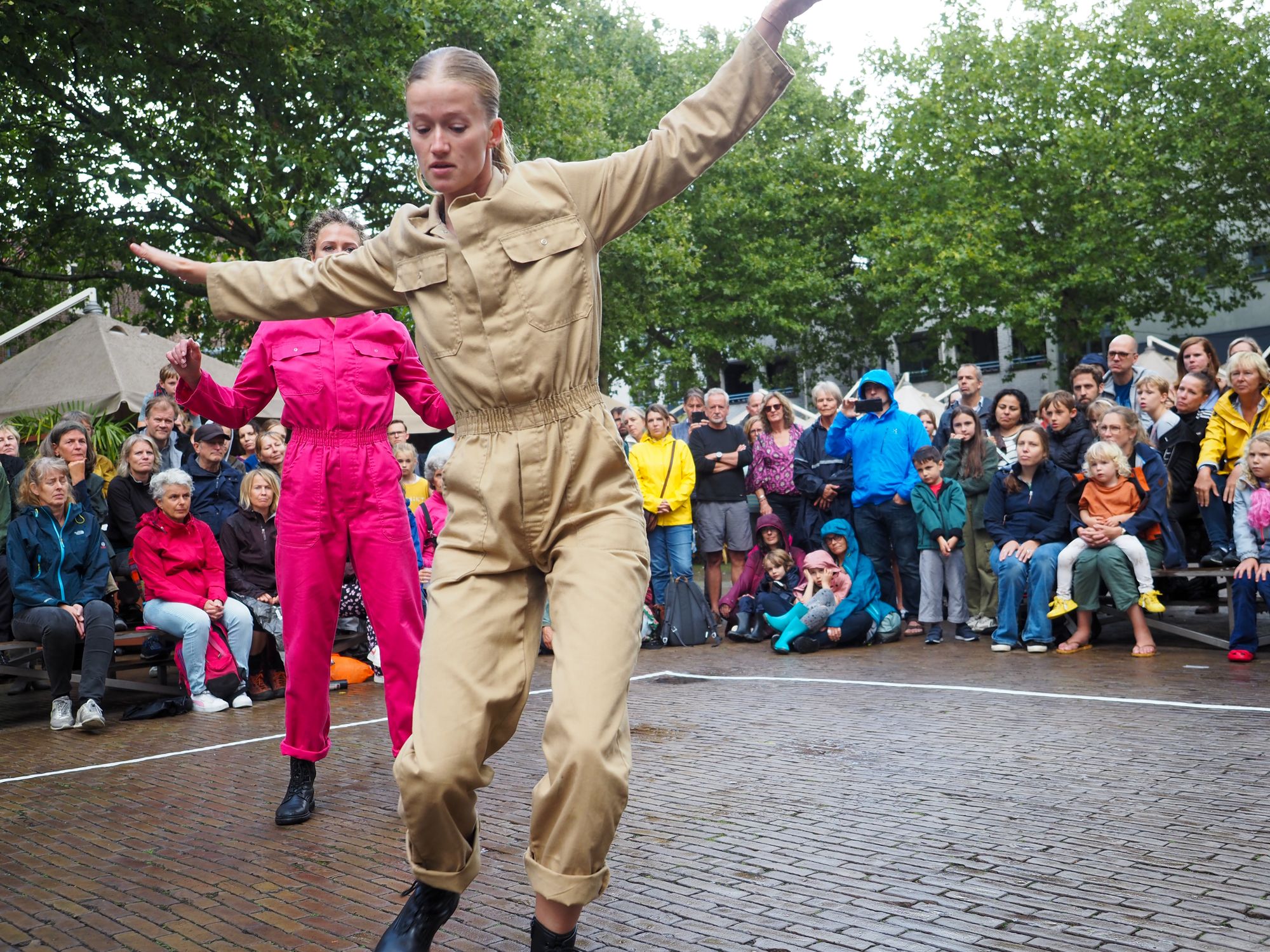
Designed with a white tape square on the surface, another show created by a powerful female duet is FRAME by the Dutch Collective DansBlok. Surrounded by spectators, the two dancers explore their reciprocal limits of balance and trust by using their bodies to create new dimensions and shapes. Their framed compositions reveal how important it is to trust the collective feeling and work together, even if we don’t necessarily agree. The show communicates the dynamism of active negotiation in opposition to individualism and non-collaborative power dynamics.
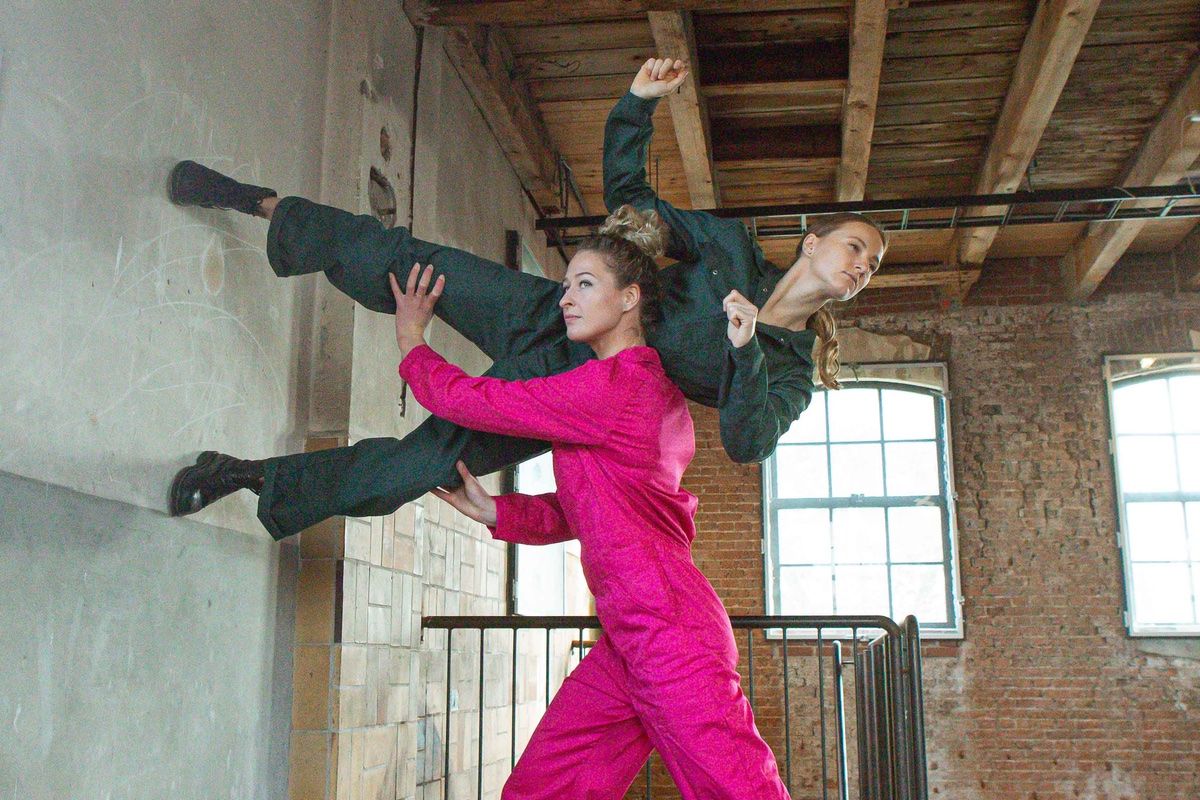
FRAME won the VKZ Spoffin OFF Award for upcoming talent with 37.5% of the votes. The company received a grant to create new work and a short residency before Spoffin 2024. The award goes annually to the most highly regarded act from Spoffin's showcase program, where emerging talent from all over Europe can present themselves to audiences and professionals. Only the spectators can determine the winner by voting online through a QR code. An easy find on all the posters around the city centre, the procedure is a practical example of collective participation and engagement. Combined with the festival app that guides the spectators through the event's attendance, it resumes the spirit of the democratic culture of Spoffin and the audience engagement best practices in place.
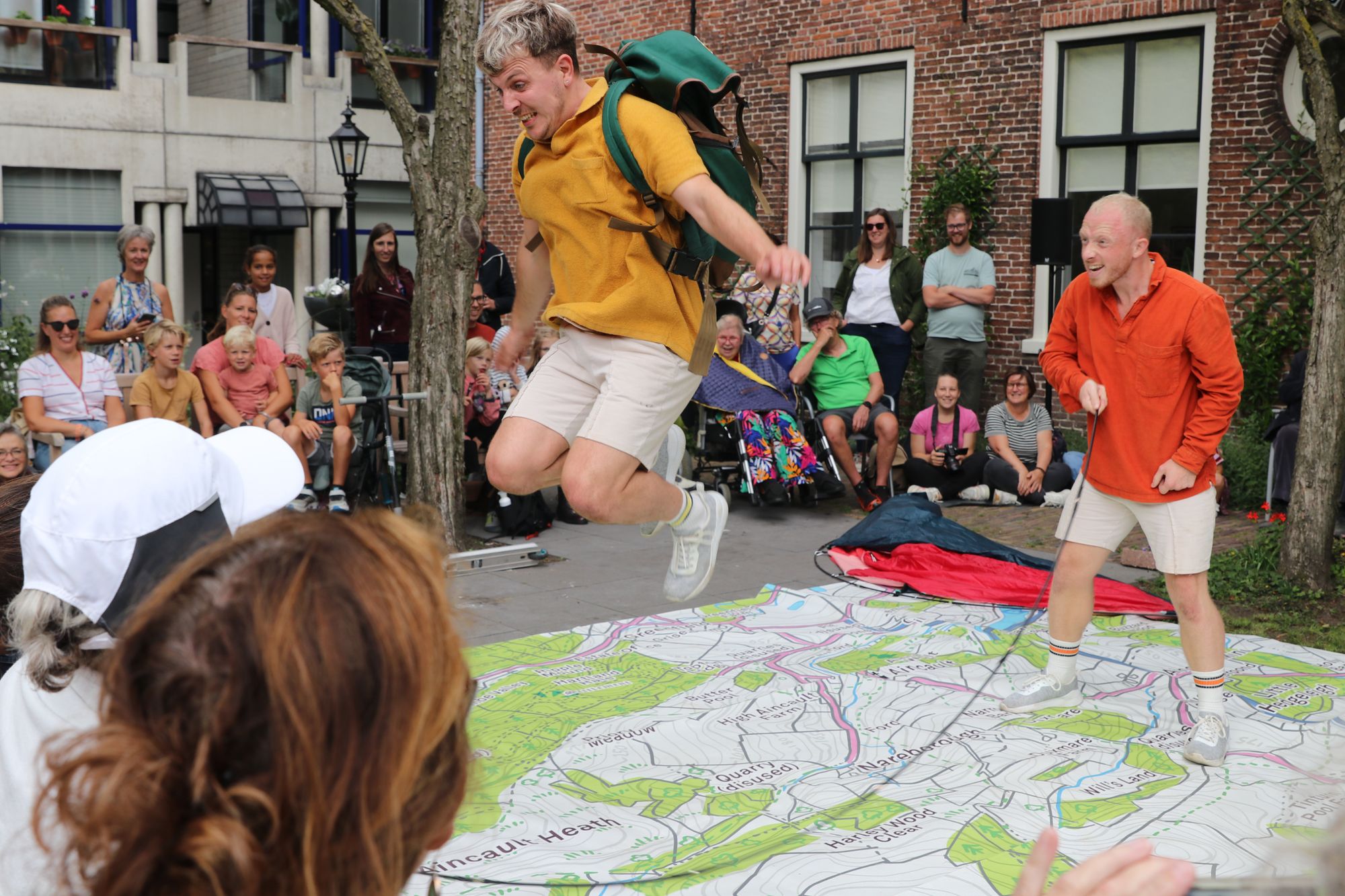
We cannot fail to notice the specific attention in the programme of Spoffin dedicated to the young generations, able to promote an inclusive way of dealing with gender, disability and inter-generational connections. On the second and third days of the festival, in between professional meetings and pitch presentations for next year’s programme, two playful shows reveal the colourful sides of growing up. The innate children's playfulness and willingness to discover the world are elements that Joe Garrett Dance Company, from the UK, are bringing on a beautiful garden at Het Seminarie with their show Get Lost. The piece combines curiosity in exploring nature and a more positive sight of male sensitivity. Toying with a human-sized unfolding map that becomes a dance floor, Joe Garbett and Richard Pye interact and play in a soft and supportive way with the audience.
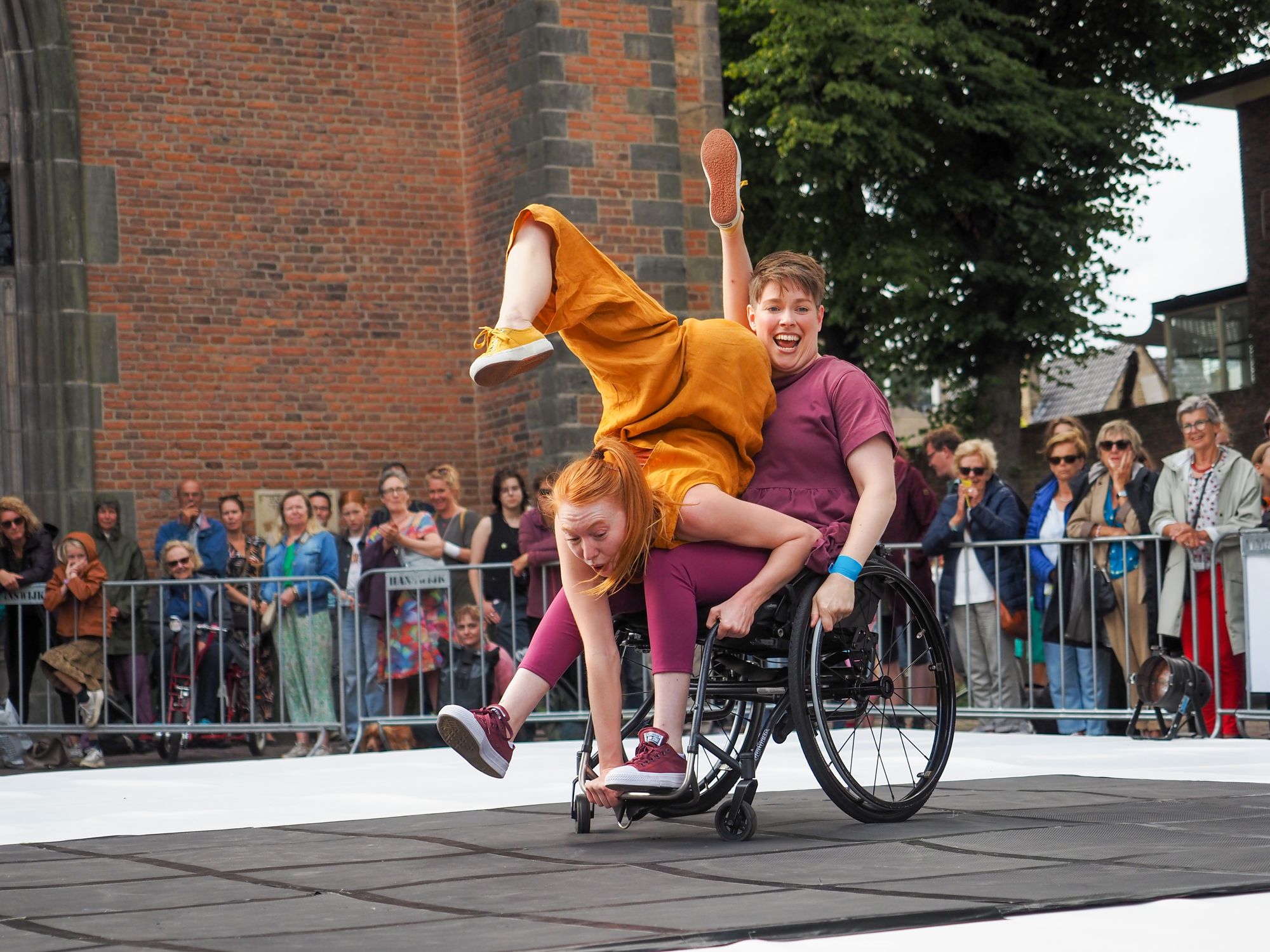
Along the path of growing up from a child to an adult, Look Mum No Hands demonstrate how joyous and tender a relationship can be, especially during the coming-of-age period, when things change rapidly. While allowing each other to be vulnerable and open, the performers play and use the wheelchair with acrobatic moves. Co-directed by Daryl Beeton and Lina Johansson, the piece is born under the umbrella of the UK-based, Disabled-led children's theatre company Daryl & Co and is co-produced by Mimbre. The performance is an open-hearted, engaging story of courage, trust and the ability to take risks.
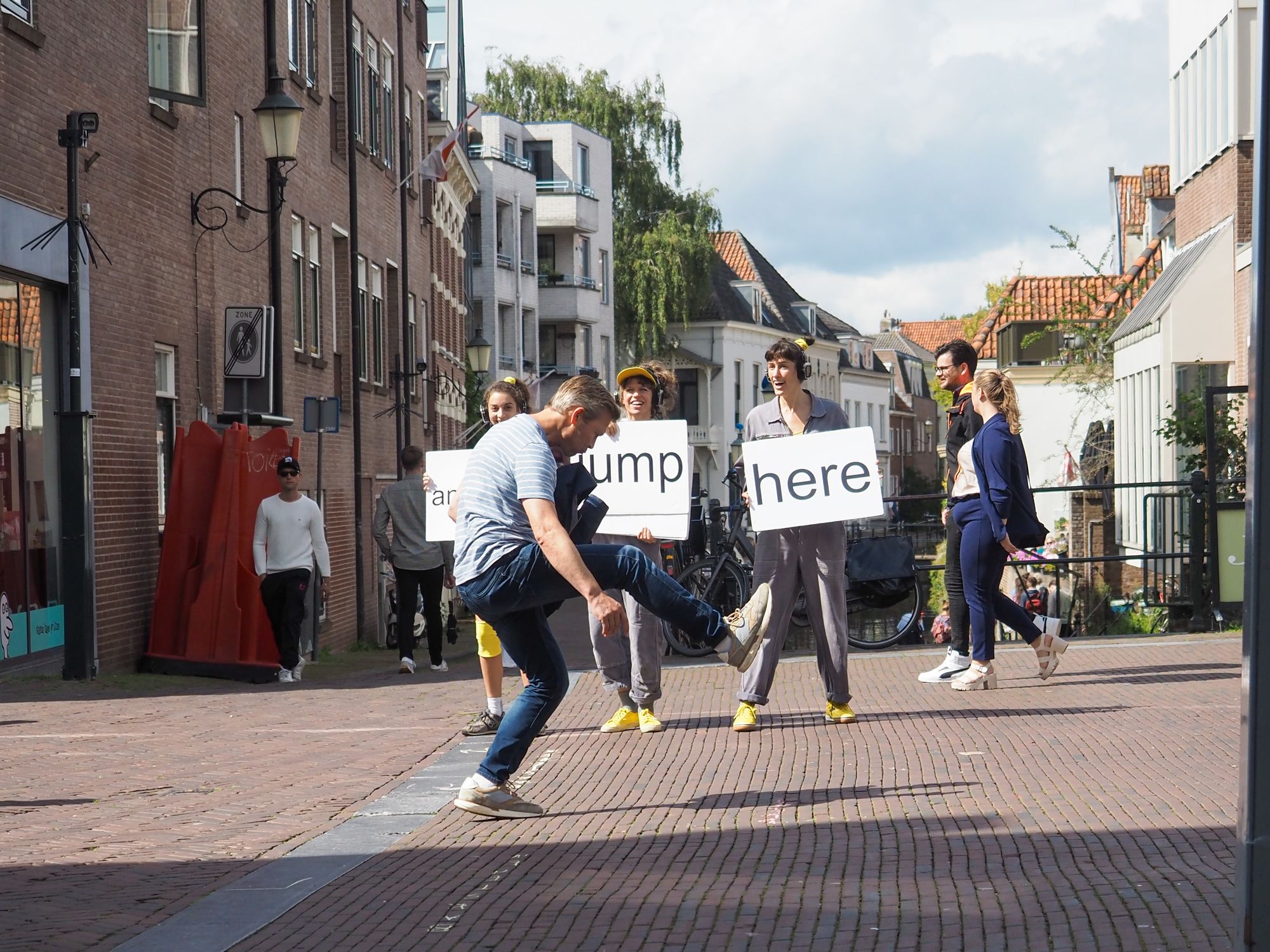
Then, in the spirit of toying and breaking everyday rhythms, The Frame by the Austrian-Catalan Eléctrico 28 is trying to re-educate the audience and passersby in feeling safe next to each other, next to strangers. By redefining everyday objects in a busy public street, the four characters play with names, sounds, letters and words in a playful way that teaches us how to be sweet, kind, and open to communicating with each other. In recent times, we might have neglected these values, and the mirroring of the pandemic and the past crisis we've suffered from could finally destress and heal a little.
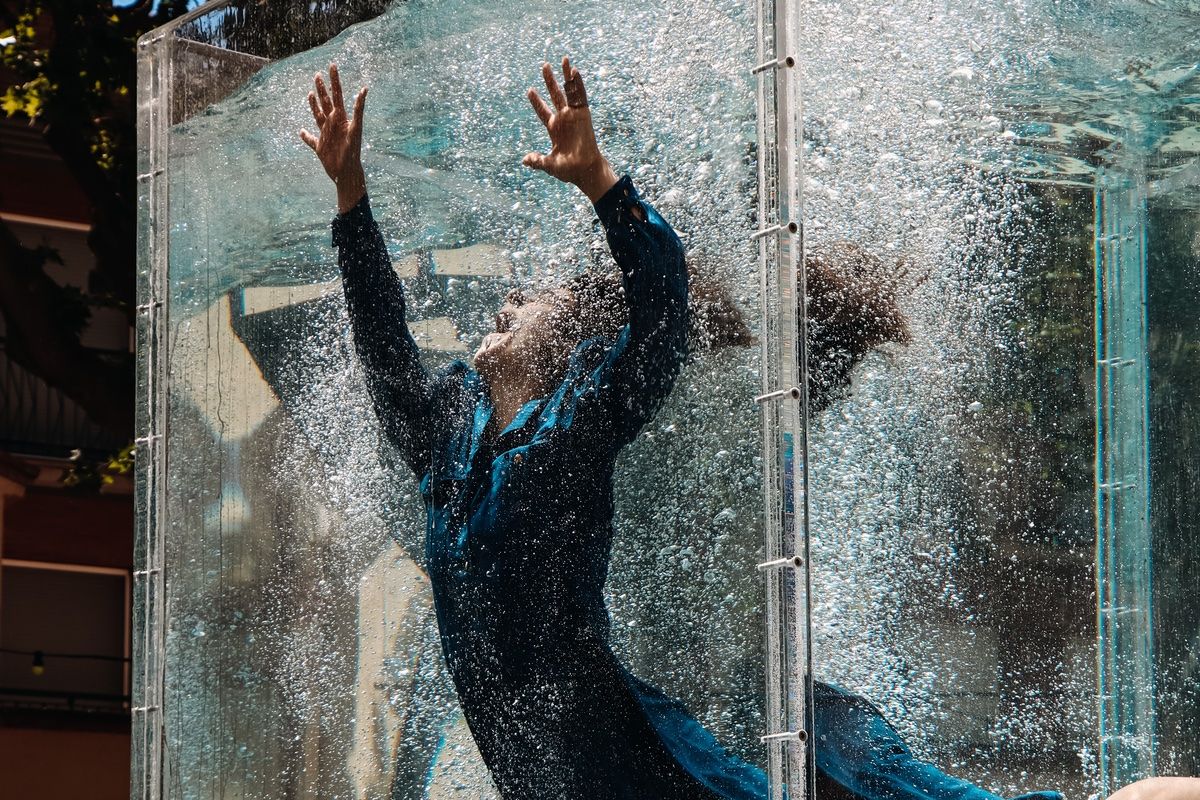
Recent times might have given us otherworldly feelings. So strong that we felt a need to float at the water's surface. By mirroring this condition, it seems like the pandemic has fostered the practice of apnea techniques among many circus creators. Dealing with breathing training in water can be seen as a meditative practice that surfaces the most diverse authorial choices.
After the poetic floating of Noustube by Jörge Müller - which nowadays counts 22 artists representing their version of the piece - or the submerged introversion scene in EZ by Elena Zanzu, there is an ongoing and growing interest in what can be called “aquatic circus”. Out of the blue, by Cirque Immergé, Eric Languel's solo in Les Fauves by Cie EaEo and Submerged Voices by Maria Palma are the three more recent examples of this attitude.
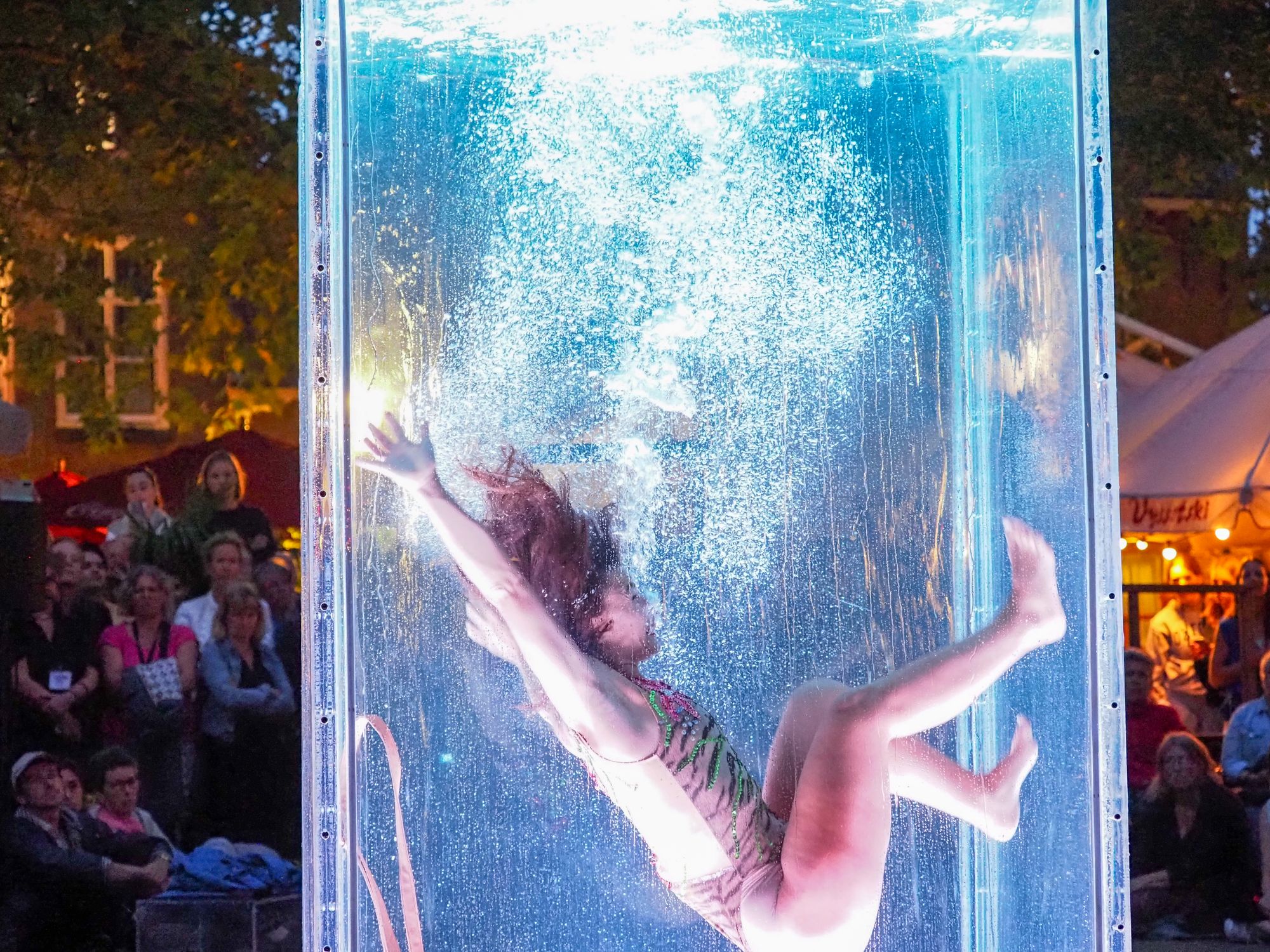
In the spectrum of experimenting with a water container, the work-in-progress proposal of the Spanish creator seems to be the most extroverted and theatrical. At Spoffin, the apparatus of Submerged Voices has been placed in a square, illuminated with suggestive lights at night. Maria Palma submerges herself and tests this specific gravity condition. Through the continuous change of costumes, routine respiration exercises and singing, the performer embodies breathing underwater, dealing with the ritual mystified qualities that water contains, such as baptism, purification, and cleansing.
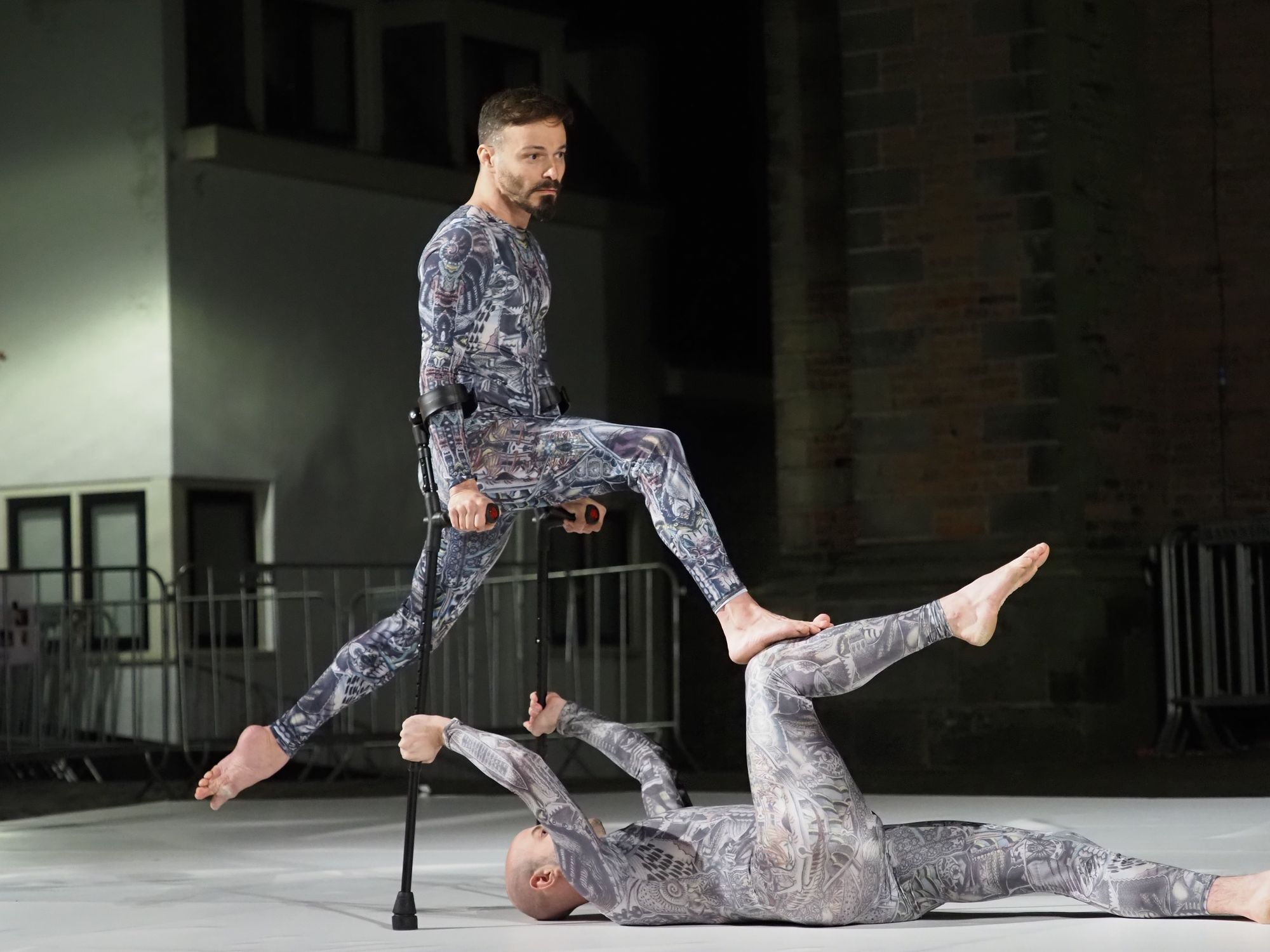
By witnessing that a body does not always have to move in a normative-oriented way, we return to earth with the emotional and spectacular choreography of Go Figure by the Israelian Sharon Fridman. The performance is a powerful duet exploring the diverse body movements of two dancers, Tomer Navot and Shmuel Dvir Cohen, who deal with the neurological and physical disease of dystonia. When a wheelchair goes in orbit, the two dancers build an unexpected dialogue with their bodies, demonstrating how much the connection and balance they strike can support their mobility in reaching new heights every time. The avant-première in Spoffin showed its adaptive format. The performance recently debuted indoors in Italy at the Oriente Occidente Festival.
According to the Artistic Director Alfred Konijnenbelt, Spoffin hosts many examples of theatre, circus, and dance shows outdoors, depriving them of a protective environment on purpose. Getting straight to the people is the intention. Their raw version in the street tests the quality of the artistic material and its immediate message, always aiming to make the event accessible to all ages and backgrounds.
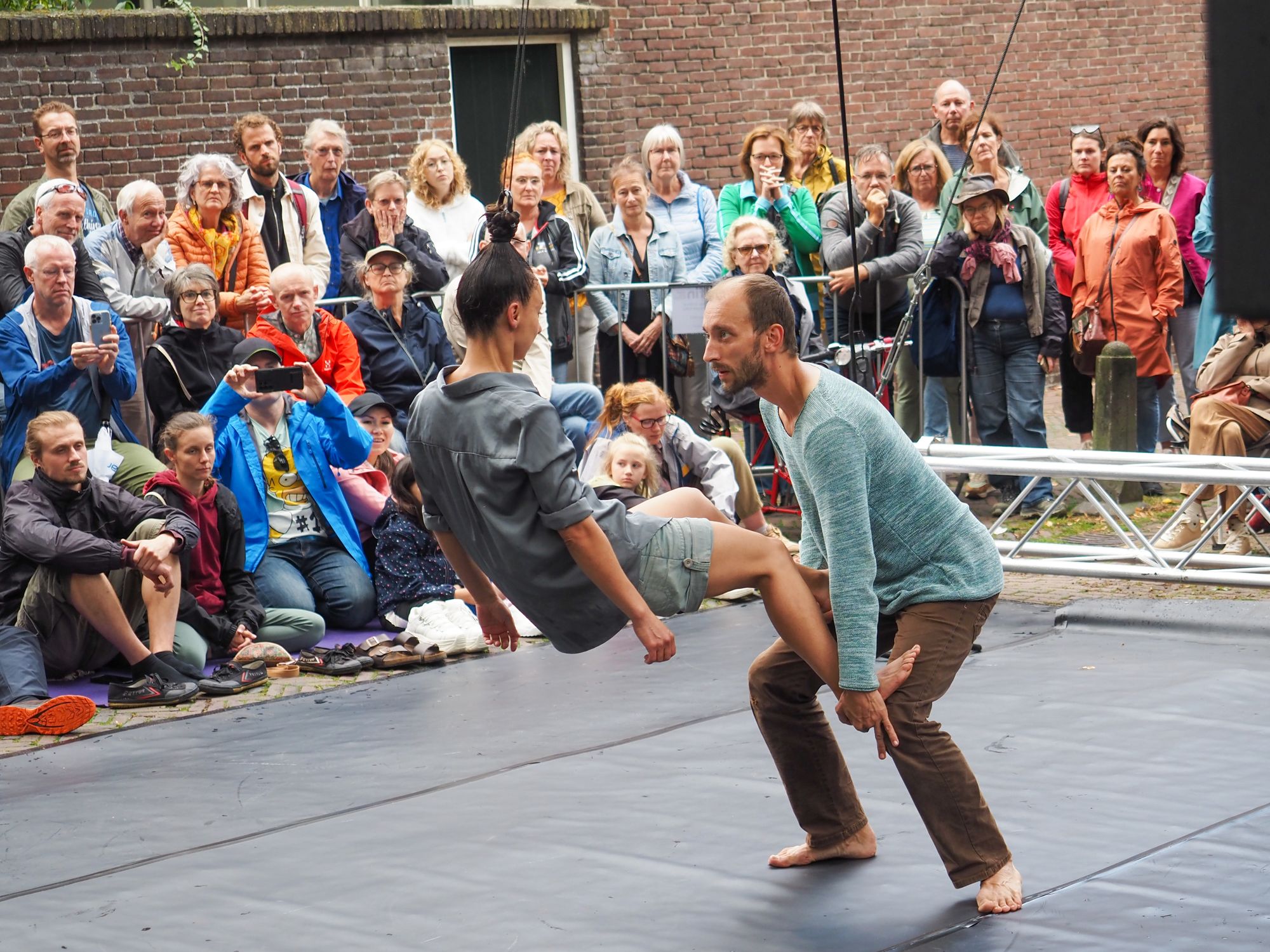
What if the body is an object, though? In their work-in-progress, A Body and Other Objects, the German-based Ana Jordão & Vincent Kollar are questioning the nature of the objectified body through hair hanging to explore space and relationships poetically. They improvise using partnering, hand-to-hand, martial arts, circus and dance in a composition that deals with manipulation and co-existence. The performers enact a constant non-verbal dialogue, which requires trust and compliance, testing reciprocal limits of freedom while freely dancing in the universe of their exploration.
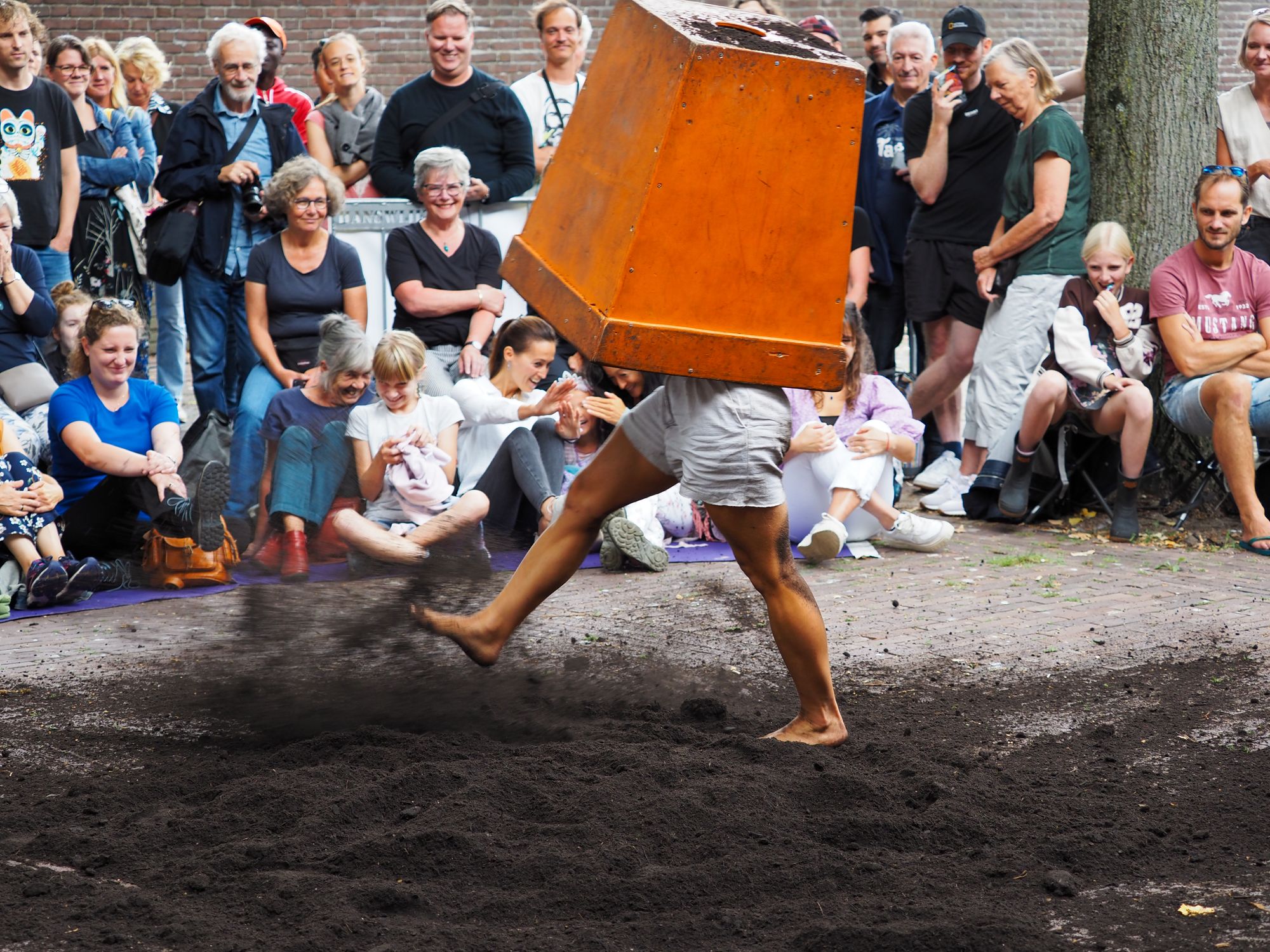
The human body also can relate to the environment around it. Inspired by the concept of a rhizome, a stem that grows horizontally and underground, able to adapt under almost any circumstances and be self-sufficient, from Portugal, Rita Carmo Martins and Mickael Kochalski presented Rizoma. The soil transforms the setting by transporting the audience into an imaginary field. Playing with the earth element and creating a circle in space is combined with sound experimentation, supporting Rita's acrobatic movements. A woman in a vase becomes a creature of another dimension, revealing a hidden connection with the ground. In a daily architectural environment shaped by the cultural rules of civilisation, a message of respect and belonging reminds us of a primal unity with nature.
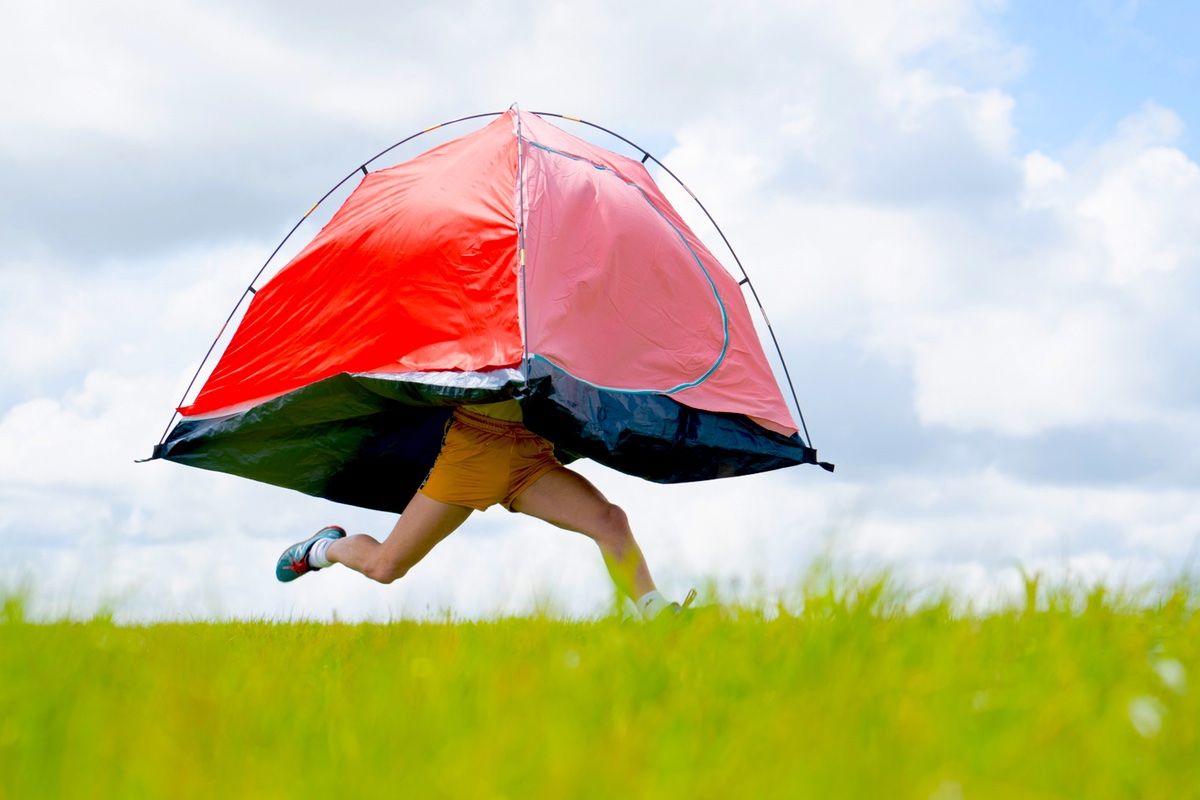
Performing in an outdoor arts festival in the Netherlands, even in August, is a weather-challenging proposition. An unexpected heavy rain for 10 minutes can delay or move the timeline. The audience, performers and festival crew must be flexible and proactive in adapting to any circumstances. Rain or not, what remains intact is the surprised reaction of passersby from being unaware of the festival. They can discover its shows. They can be indifferent or curious, proving how many ways are in place to interact. The changes in light or noise levels and surrounding conditions are unique every time in contrast to what would usually happen in an indoor space such as a theatre, where the settings are much more under control.
Overall, relationships become immediate and open. The secret to making it happen requires flexibility and peace of mind to realise how anything can grow if supported correctly, with patience, compliance, and collaboration. Powerful voices can be heard without many words, sounds, or special effects, but also by using their skin, materials, and bodies to relate to each other and the environment that contains them to let them flow.
